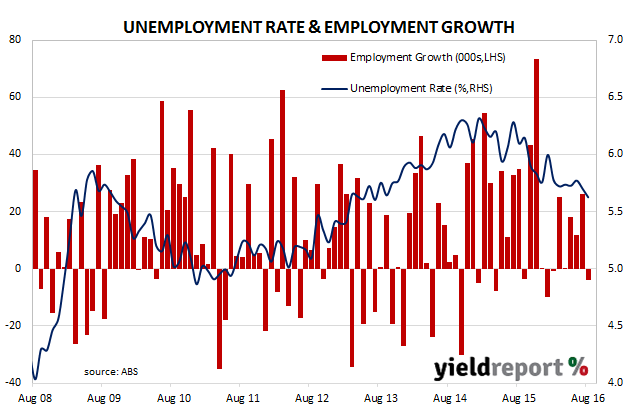Australia’s employment rate dropped unexpectedly in August but the news is not something the financial markets received as being a positive. The ABS released August employment estimates which indicated the total number of people employed in Australia in either full-time or part-time work fell by 3900 during the month, less than the market expectation of +15,000. Somewhat surprisingly, the unemployment rate also fell, from 5.7% to 5.6% but this anomaly was put down to people that stopped actively looking for work, leading to a fall in the participation rate from 64.9% to 64.7%. Hours worked in all jobs decreased by 3.9 million hours (0.2%) to 1,656 million hours for the month.
In another twist, full time employment rose 11,500 while part-time employment fell by 15,400. The underemployment rate increased to 8.7% and it attracted quite a lot of analyst attention after the RBA disclosed it was a statistic figuring in its discussions. This rate is the percentage of employees who would work more hours if given the opportunity.
The local currency fell 0.25 US cents on the news and then proceeded to partially recover over the afternoon. According to CBA, bond markets ignored the news, although yields ended the day higher, with more movement at the short end. The 3 year bond yield rose 4bps to 1.64% while 10 year bond yields rose only 1bp.
Gareth Aird, CBA senior economist said, “Today’s figures don’t really sway the monetary policy debate one way or the other. The fall in the unemployment rate would suggest some tightening in the labour market. But the lift in the underemployment rate to a record high means that spare capacity in the labour market remains elevated.” Westpac’s Justin Smirk was more optimistic. He thinks the statistical shenanigans which come from the ABS sampling process will lead higher employment numbers in future surveys. “Given that the ABS notes that the outgoing group in September Survey will have a low employment to population ratio than the sample as a whole, the stage is being set for a recovery in both employment and the labour force.”


